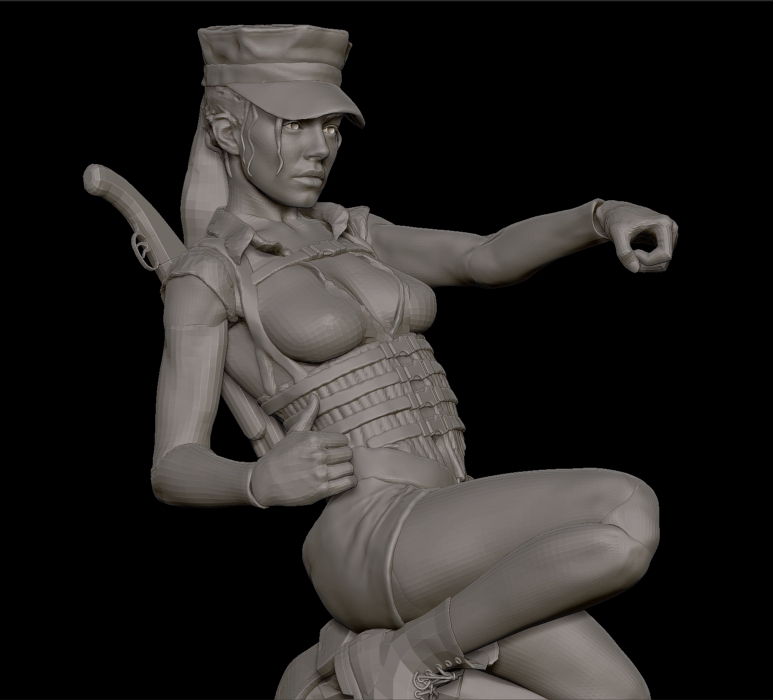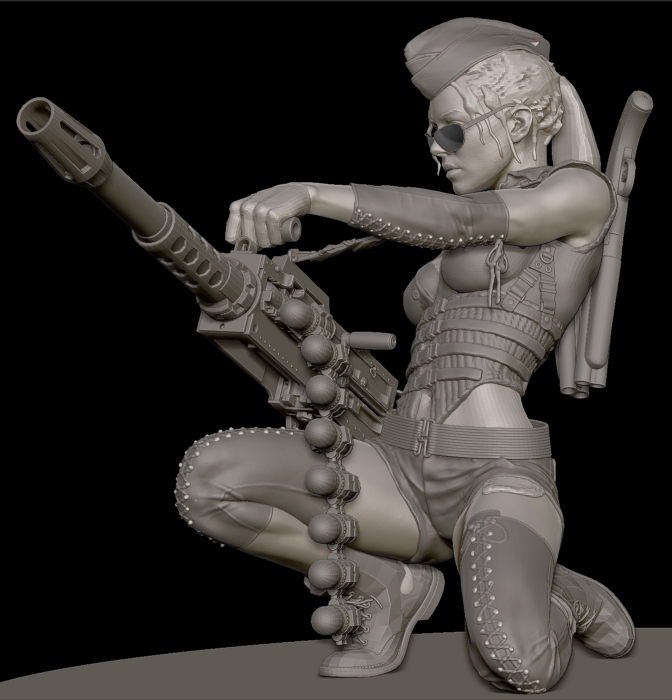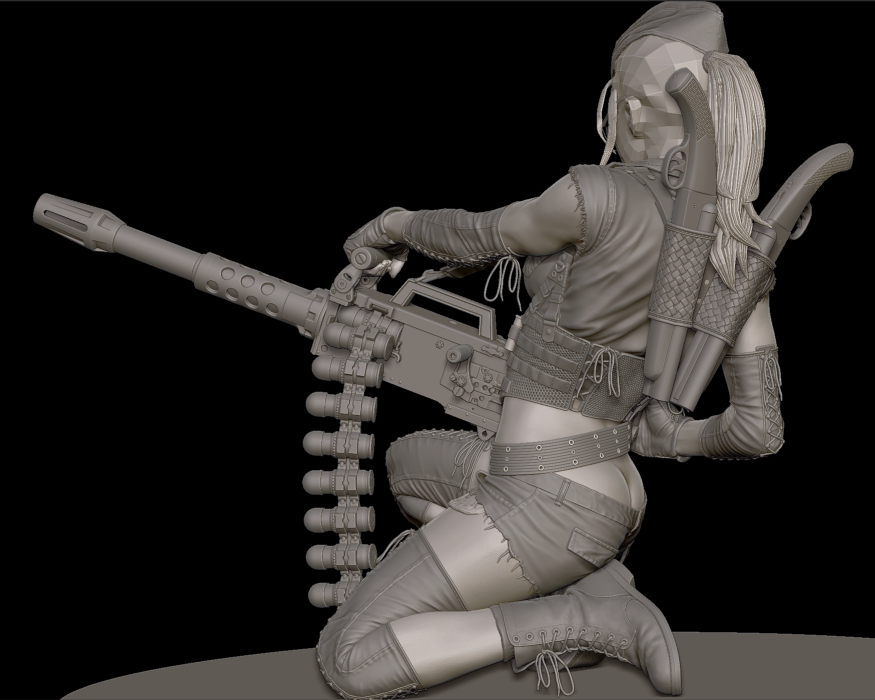After the pose was settled, I started roughing in the accessories. I already had the basic gun and boots from my earlier doodling. Other than those, however, I didn’t have any real design in mind – I was just winging it – so I used Z Sketch to quickly lay down some “digital clay”.


I use Z Sketch all the time because it lets you test things out very quickly. Sometimes I will clean it up and detail it pretty far and just retopologize, sometimes I get enough info from the sketch to go straight to Maya and build the details from scratch there. It depends on the individual item. The rest of the process is cleaning things up and adding details. But I keep everything as low res for as long as possible. This lets me easily tweak the pose or change it dramatically right up until the end. At any stage, I can just send it back to Maya, repose, and send it back to Zbrush and all the accessories like gloves, boots, belts, straps, etc, just go along for the ride.  This is also the reason why I am judicious with dynameshing. Dynamesh is a very powerful tool, but I find that too much of it severly hampers my flexibility. Usually when I dynamesh, I will immediately Z Remesh and project the higher levels of detail so I still have a low rez version to work with. I also try to keep everything in separate subtools for the same reason. For example, I keep things like the arms and legs in their separate pieces (upper arm, lower arm, hand, etc.) for as long as I can. I just blend them together to look like single pieces. Merging things too early always comes back to haunt me. This means I regularly work with 200 or so subtools – which is a pain – but it helps that everything is low rez and changeable right up until the end.
This is also the reason why I am judicious with dynameshing. Dynamesh is a very powerful tool, but I find that too much of it severly hampers my flexibility. Usually when I dynamesh, I will immediately Z Remesh and project the higher levels of detail so I still have a low rez version to work with. I also try to keep everything in separate subtools for the same reason. For example, I keep things like the arms and legs in their separate pieces (upper arm, lower arm, hand, etc.) for as long as I can. I just blend them together to look like single pieces. Merging things too early always comes back to haunt me. This means I regularly work with 200 or so subtools – which is a pain – but it helps that everything is low rez and changeable right up until the end.


Since everything I make is eventually printed, the last stage is always cutting the model apart and keying it for production. Keying not only keeps the pieces smaller and easier to print, but if you cut it apart with some forethought, you can keep the pieces easier to mold and paint as well.


That’s about it I guess. Thanks for looking!
Cheers!
Will
Attachments



